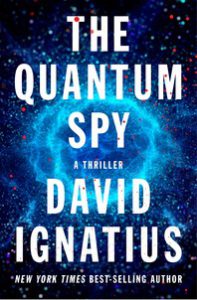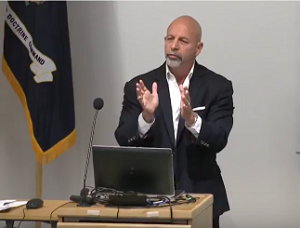[Editor’s Note: Story Telling is a powerful tool that allows us to envision how innovative and potentially disruptive technologies could be employed and operationalized in the Future Operational Environment. In today’s guest blog post, proclaimed Mad Scientist Mr. August Cole and Mr. Amir Husain use story telling to effectively:
- Describe what the future might look like if our adversaries out-innovate us using Artificial Intelligence and cheap robotics;
- Address how the U.S. might miss a strategic breakthrough due to backward-looking analytical mindsets; and
- Imagine an unconventional Allied response in Europe to an emboldened near-peer conflict.
Enjoy reading how the NATO Alliance could react to Omega — “a Russian autonomous joint force in a … ready-to-deploy box… [with an] area-denial bubble projected by their new S-600s extend[ing] all the way to the exo-sphere, … cover[ing] the entirety of the ground, sea and cyber domains” — on the cusp of a fictional not-so-distant future near-peer conflict!]
Omega
22 KILOMETERS NORTH OF KYIV / UKRAINE
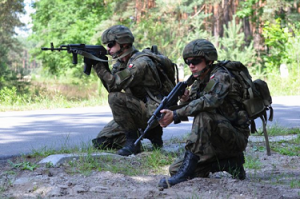 “Incoming!” shouted Piotr Nowak, a master sergeant in Poland’s Jednostka Wojskowa Komandosów special operations unit. Dropping to the ground, he clawed aside a veil of brittle green moss to wedge himself into a gap beneath a downed tree. He hoped the five other members of his military advisory team, crouched around the fist-shaped rock formation behind him, heard his shouts. To further reinforce Ukraine’s armed forces against increasingly brazen Russian military support for separatists in the eastern part of the country, Poland’s government had been quietly supplying military trainers. A pro-Russian military coup in Belarus two weeks earlier only served to raise tensions in the region – and the stakes for the JWK on the ground.
“Incoming!” shouted Piotr Nowak, a master sergeant in Poland’s Jednostka Wojskowa Komandosów special operations unit. Dropping to the ground, he clawed aside a veil of brittle green moss to wedge himself into a gap beneath a downed tree. He hoped the five other members of his military advisory team, crouched around the fist-shaped rock formation behind him, heard his shouts. To further reinforce Ukraine’s armed forces against increasingly brazen Russian military support for separatists in the eastern part of the country, Poland’s government had been quietly supplying military trainers. A pro-Russian military coup in Belarus two weeks earlier only served to raise tensions in the region – and the stakes for the JWK on the ground.
An instant later incoming Russian Grad rocket artillery announced itself with a shrill shriek. Then a rapid succession of sharp explosive pops as the dozen rockets burst overhead. Nowak quickly realized these weren’t ordinary fires.
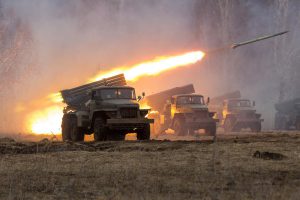
There was no spray of airburst shrapnel or the lung-busting concussion of a thermobaric munition. Instead, it sounded like summer fireworks – the explosive separation of the 122mm rocket artillery shell’s casing. Once split open, each weapon’s payload deployed an air brake to slow its approach.
During that momentary silence, Nowak edged out slightly from under the log to look up at the sky. He saw the drifting circular payload extend four arms and then, suddenly, it came to life as it sprang free of its parachute harness. With a whine from its electric motors, the quadcopter darted out of sight.
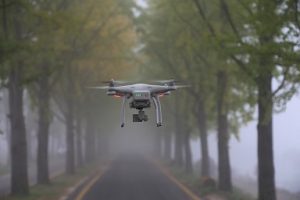
That sound built and built over the next minute as eleven more of these Russian autonomous drones darted menacingly in a loose formation through the forest above the Polish special operations commandos. Nowak cursed the low-profile nature of their mission: The Polish soldiers had not yet received the latest compact American counter-UAS electronic-warfare systems that could actually fit in their civilian Skoda Kodiaq SUVs.
Nowak held his airplane-mode mobile phone out from under the log to film the drones, using his arm like a selfie-stick. Nowak needed to report in what he was seeing – this was proof Russian forces had turned their new AI battle management system online inside Ukraine. But he also knew that doing so would be a death sentence, whether he texted the video on the country’s abominably slow mobile networks or used his secure NATO comms. These Russian drones could detect either type of transmission in an instant. Once the drones cued to his transmission he would be targeted either by their own onboard anti-personnel munitions or a follow-on strike by conventional artillery.
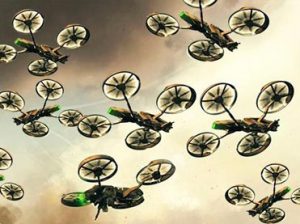 This was no mere variation on the practice of using Leer-3 drones for electronic warfare and to spot for Russian artillery. It marked the first-ever deployment of an entirely new Russian AI battle system complex, Omega. Nowak had only heard about the Russians firing entire drone swarms from inexpensive Grad rocket-artillery rounds once before in Syria while deployed with a US task force. But they had never done so in Ukraine, at least not that he knew about. Most observers chalked up Russia’s Syrian experimentations with battlefield robots and drone swarms to clumsy failures. Clearly something had changed.
This was no mere variation on the practice of using Leer-3 drones for electronic warfare and to spot for Russian artillery. It marked the first-ever deployment of an entirely new Russian AI battle system complex, Omega. Nowak had only heard about the Russians firing entire drone swarms from inexpensive Grad rocket-artillery rounds once before in Syria while deployed with a US task force. But they had never done so in Ukraine, at least not that he knew about. Most observers chalked up Russia’s Syrian experimentations with battlefield robots and drone swarms to clumsy failures. Clearly something had changed.
With his phone, Nowak recorded how the drones appeared to be coordinating their search activities as if they were a single hive intelligence. They divided the dense forest into cells they searched cooperatively. Within seconds, they climbed and dove from treetop height looking for anyone or anything hiding below.
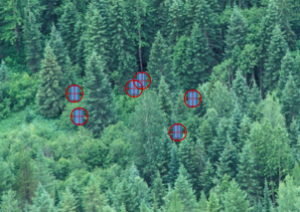 At that very instant, the drone’s computer vision algorithms detected Novak’s team. Each and every one of them. Within seconds, six of the aggressively maneuvering drones revealed themselves in a disjointed dive down from the treetops and zoomed in on the JWK fighters’ positions.
At that very instant, the drone’s computer vision algorithms detected Novak’s team. Each and every one of them. Within seconds, six of the aggressively maneuvering drones revealed themselves in a disjointed dive down from the treetops and zoomed in on the JWK fighters’ positions.
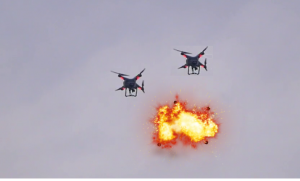 Nobody needed to be told what to do. The team raised their weapons and fired short bursts at the Russian drones. One shattered like a clay pigeon. But two more buzzed into view to take its place. Another drone went down to a shotgun-fired SkyNet round. Then the entire drone formation shifted its flight patterns, dodging and maneuvering even more erratically, making it nearly impossible to shoot the rest down. The machines learned from their own losses, Nowak realized. Would his superiors do the same for him?
Nobody needed to be told what to do. The team raised their weapons and fired short bursts at the Russian drones. One shattered like a clay pigeon. But two more buzzed into view to take its place. Another drone went down to a shotgun-fired SkyNet round. Then the entire drone formation shifted its flight patterns, dodging and maneuvering even more erratically, making it nearly impossible to shoot the rest down. The machines learned from their own losses, Nowak realized. Would his superiors do the same for him?
Nowak emptied his magazine with a series of quick bursts, but rather than reload he put his weapon aside and rolled out from under the log. Fully exposed and clutching the phone with shaking hands, he hastily removed one of his gloves with his teeth. Then he switched the device on. Network connected. He scrolled to the video of the drones. Send! Send! Send!
Eleven seconds later, Novak’s entire Polish JWK special forces team lay dead on the forest floor.

________________________________
Omega is not any one specific weapon, rather it is made up of a menagerie of Russian weapons, large and small. It’s as if you fused information warfare, SAMs, fires, drones, tactical autonomous bots… There’s everything from S-600 batteries to cheap Katyusha-style rocket artillery to Uran-9 and -13 tanks. But it is what controls the hardware that makes Omega truly unique: AI. At its core, it’s an artificial intelligence system fusing data from thousands of sensors, processed information, and found patterns that human eyes and minds cannot fathom. The system’s AI is not only developing a comprehensive real-time picture, it’s also developing probabilities and possible courses of enemy action. It can coordinate thousands of “shooters”, from surface-to-air missiles, to specialized rocket artillery deploying autonomous tactical drones like the ones that killed the JWK team, to UGVs like the latest Uran-13 autonomous tracked units.
The developers of the Omega system incorporated technologies such as software-defined radio, which uses universal receivers that could listen in to a broad array of frequencies. Thousands of these bands are monitored with machine learning algorithms to spot insurgent radio stations, spy on the locations of Ukrainian military and police, and even determine if a certain frequency is being used to remotely control explosives or other military equipment. When a threat is discovered, the system will dispatch drones to observe the triangulated location of the source. If the threat needs to be neutralized a variety of kinetic systems – from guided artillery shells to loitering munitions and autonomous drones – can be dispatched for the kill.
________________________________
If you enjoyed this excerpt, please:
Read the complete Omega short story, hosted by our colleagues at the Atlantic Council NATOSource blog,
Learn how the U.S. Joint Force and our partners are preparing to prevail in competition with our strategic adversaries and, when necessary, penetrate and dis-integrate their anti-access and area denial systems and exploit the resultant freedom of maneuver to achieve strategic objectives (win) and force a return to competition on favorable terms in The U.S. Army in Multi-Domain Operations 2028 Executive Summary, and
See one prescription for precluding the strategic surprise that is the fictional Omega in The Importance of Integrative Science/Technology Intelligence (InS/TINT) to the Prediction of Future Vistas of Emerging Threats, by Dr. James Giordano, CAPT (USN – Ret.) L. R. Bremseth, and Mr. Joseph DeFranco.
Reminder: You only have 1 week left to enter your submissions for the Mad Scientist Science Fiction Writing Contest 2019. Click here for more information about the contest and how to submit your short story(ies) for consideration by our 1 April 2019 deadline!
Mr. August Cole is a proclaimed Mad Scientist, author, and futurist focusing on national security issues. He is a non-resident senior fellow at the Art of the Future Project at the Atlantic Council. He also works on creative foresight at SparkCognition, an artificial intelligence company, and is a senior advisor at Avascent, a consulting firm. His novel with fellow proclaimed Mad Scientist P.W. Singer, entitled Ghost Fleet: A Novel of the Next World War, explores the future of great power conflict and disruptive technologies in wartime.
Mr. Amir Husain is the founder and CEO of SparkCognition, a company envisioned to be at the forefront of the “AI 3.0” revolution. He serves as advisor and board member to several major institutions, including IBM Watson, University of Texas Department of Computer Science, Makerarm, ClearCube Technology, uStudio and others; and his work has been published in leading tech journals, including Network World, IT Today, and Computer World. In 2015, Amir was named Austin’s Top Technology Entrepreneur of the Year.
Disclaimer: This publication is a work of fiction by Messrs. August Cole and Amir Husain, neither of whom have any affiliation with U.S. Army Training and Doctrine Command, the U.S. Army, or the U.S. Government. This piece is meant to be thought-provoking and entertaining, and does not reflect the current position of the U.S. Army.

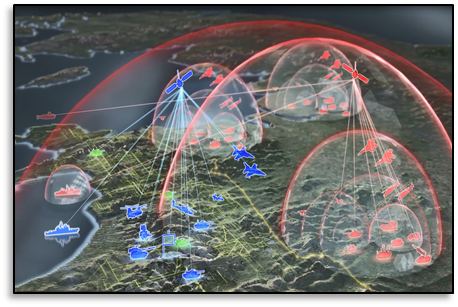

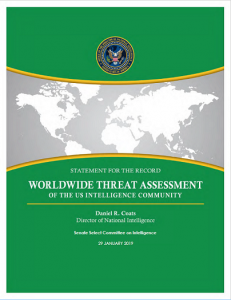 On January 29th, 2019, Daniel Coats, the United States Director of National Intelligence, reported to the Senate Select Committee on Intelligence about emerging threats to national security.
On January 29th, 2019, Daniel Coats, the United States Director of National Intelligence, reported to the Senate Select Committee on Intelligence about emerging threats to national security.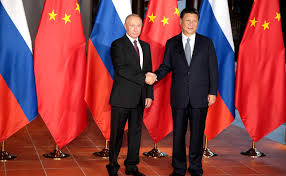 Russian activities and collaborative efforts
Russian activities and collaborative efforts China’s expanding efforts in bio S/T research and innovation is significant as it can, and is intended to alter the international geopolitical landscape.
China’s expanding efforts in bio S/T research and innovation is significant as it can, and is intended to alter the international geopolitical landscape.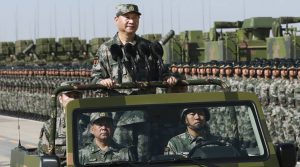
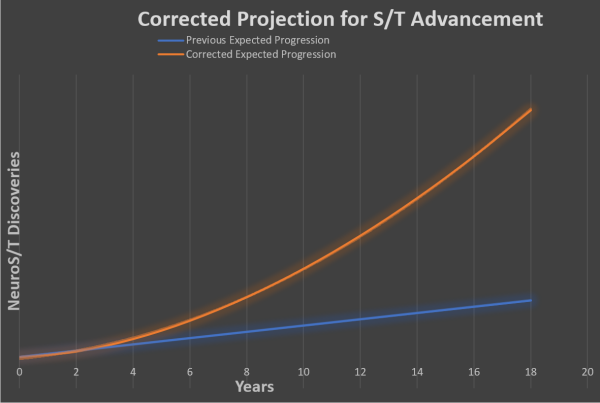


 Political and military actions directed at adversely impacting or defeating an opponent often entail clandestine operations which can be articulated across a spectrum that ranges from overt warfare to subtle “engagements.” Routinely, the United States, along with its allies (and adversaries), has employed clandestine tactics and operations across the kinetic and non-kinetic domains of warfare. Arguably, the execution of clandestine kinetic operations is employed more readily as these collective activities often occur after the initiation of conflict (i.e., “Right of Bang”), and their effects may be observed (to various degrees) and/or measured. Given that clandestine non-kinetic activities are less visible and insidious, they may be particularly (or more) effective because often they are unrecognized and occur “Left of Bang.” Other nations, especially adversaries, understand the relative economy of force that non-kinetic engagements enable and increasingly are focused upon developing and articulating advanced methods for operations.
Political and military actions directed at adversely impacting or defeating an opponent often entail clandestine operations which can be articulated across a spectrum that ranges from overt warfare to subtle “engagements.” Routinely, the United States, along with its allies (and adversaries), has employed clandestine tactics and operations across the kinetic and non-kinetic domains of warfare. Arguably, the execution of clandestine kinetic operations is employed more readily as these collective activities often occur after the initiation of conflict (i.e., “Right of Bang”), and their effects may be observed (to various degrees) and/or measured. Given that clandestine non-kinetic activities are less visible and insidious, they may be particularly (or more) effective because often they are unrecognized and occur “Left of Bang.” Other nations, especially adversaries, understand the relative economy of force that non-kinetic engagements enable and increasingly are focused upon developing and articulating advanced methods for operations. Much has been written about the fog of war. Non-kinetic engagements can create unique uncertainties prior to and/or outside of traditional warfare, precisely because they have qualitatively and quantitatively “fuzzy boundaries” as blatant acts of war. The “intentionally induced ambiguity” of non-kinetic engagements can establish plus-sum advantages for the executor(s) and zero-sum dilemmas for the target(s). For example, a limited scale non-kinetic action, which exerts demonstrably significant effects but does not meet defined criteria for an act of war, places the targeted recipient(s) at a disadvantage: First, in that the criteria for response (and proportionality) are vague and therefore any response could be seen as questionable; and second, in that if the targeted recipient(s) responds with bellicose action(s), there is considerable likelihood that they may be viewed as (or provoked to be) the aggressor(s) (and therefore susceptible to some form of retribution that may be regarded as sanctionable).
Much has been written about the fog of war. Non-kinetic engagements can create unique uncertainties prior to and/or outside of traditional warfare, precisely because they have qualitatively and quantitatively “fuzzy boundaries” as blatant acts of war. The “intentionally induced ambiguity” of non-kinetic engagements can establish plus-sum advantages for the executor(s) and zero-sum dilemmas for the target(s). For example, a limited scale non-kinetic action, which exerts demonstrably significant effects but does not meet defined criteria for an act of war, places the targeted recipient(s) at a disadvantage: First, in that the criteria for response (and proportionality) are vague and therefore any response could be seen as questionable; and second, in that if the targeted recipient(s) responds with bellicose action(s), there is considerable likelihood that they may be viewed as (or provoked to be) the aggressor(s) (and therefore susceptible to some form of retribution that may be regarded as sanctionable). Nominally, non-kinetic engagements often utilize non-military means to expand the effect-space beyond the conventional battlefield. The Department of Defense and Joint Staff do not have a well agreed-upon lexicon to define and to express the full spectrum of current and potential activities that constitute non-kinetic engagements. It is unfamiliar – and can be politically uncomfortable – to use non-military terms and means to describe non-kinetic engagements. As previously noted, it can be politically difficult – if not precarious– to militarily define and respond to non-kinetic activities.
Nominally, non-kinetic engagements often utilize non-military means to expand the effect-space beyond the conventional battlefield. The Department of Defense and Joint Staff do not have a well agreed-upon lexicon to define and to express the full spectrum of current and potential activities that constitute non-kinetic engagements. It is unfamiliar – and can be politically uncomfortable – to use non-military terms and means to describe non-kinetic engagements. As previously noted, it can be politically difficult – if not precarious– to militarily define and respond to non-kinetic activities.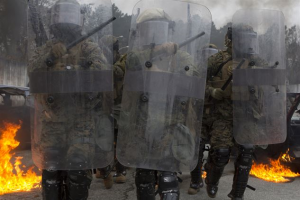 Non-kinetic engagements are best employed to incur disruptive effects in and across various dimensions of effect (e.g., biological, psychological, social) that can lead to intermediate to long-term destructive manifestations (in a number of possible domains, ranging from the economic to the geo-political). The latent disruptive and destructive effects should be framed and regarded as “Grand Strategy” approaches that evoke outcomes in a “long engagement/long war” context rather than merely in more short-term tactical situations.
Non-kinetic engagements are best employed to incur disruptive effects in and across various dimensions of effect (e.g., biological, psychological, social) that can lead to intermediate to long-term destructive manifestations (in a number of possible domains, ranging from the economic to the geo-political). The latent disruptive and destructive effects should be framed and regarded as “Grand Strategy” approaches that evoke outcomes in a “long engagement/long war” context rather than merely in more short-term tactical situations.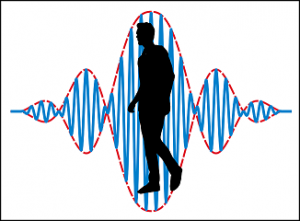 Thus, non-kinetic operations must be seen and regarded as “tools of mass disruption,” incurring “rippling results” that can evoke both direct and indirect de-stabilizing effects. These effects can occur and spread: 1) from the cellular (e.g., affecting physiological function of a targeted individual) to the socio-political scales (e.g., to manifest effects in response to threats, burdens and harms incurred by individual and/or groups); and 2) from the personal (e.g., affecting a specific individual or particular group of individuals) to the public dimensions in effect and outcome (e.g., by incurring broad scale reactions and responses to key non-kinetic events).
Thus, non-kinetic operations must be seen and regarded as “tools of mass disruption,” incurring “rippling results” that can evoke both direct and indirect de-stabilizing effects. These effects can occur and spread: 1) from the cellular (e.g., affecting physiological function of a targeted individual) to the socio-political scales (e.g., to manifest effects in response to threats, burdens and harms incurred by individual and/or groups); and 2) from the personal (e.g., affecting a specific individual or particular group of individuals) to the public dimensions in effect and outcome (e.g., by incurring broad scale reactions and responses to key non-kinetic events). Given the increasing global stature, capabilities, and postures of Asian nations, it becomes increasingly important to pay attention to aspects of classical Eastern thought (e.g., Sun Tzu) relevant to bellicose engagement. Of equal importance is the recognition of various nations’ dedicated enterprises in developing methods of non-kinetic operations (e.g., China; Russia), and to understand that such endeavors may not comport with the ethical systems, principles, and restrictions adhered to by the United States and its allies.
Given the increasing global stature, capabilities, and postures of Asian nations, it becomes increasingly important to pay attention to aspects of classical Eastern thought (e.g., Sun Tzu) relevant to bellicose engagement. Of equal importance is the recognition of various nations’ dedicated enterprises in developing methods of non-kinetic operations (e.g., China; Russia), and to understand that such endeavors may not comport with the ethical systems, principles, and restrictions adhered to by the United States and its allies.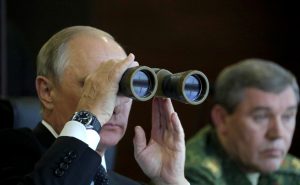 These differing
These differing 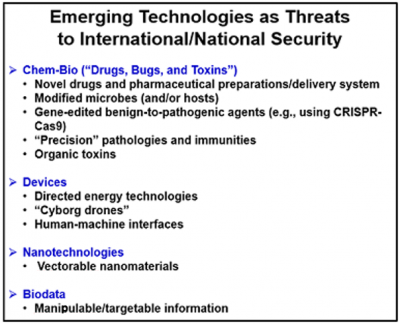 Table 1
Table 1 Of key interest are the present viability and current potential value of the
Of key interest are the present viability and current potential value of the As recent incidents (e.g., “Havana Syndrome”; use of novichok; infiltration of foreign-produced synthetic opioids to US markets) have demonstrated, the brain sciences and technologies have utility to affect “minds and hearts” in (kinetic and non-kinetic) ways that elicit biological, psychological, socio-economic, and political effects which can be clandestine, covert, or attributional, and which evoke multi-dimensional ripple effects in particular contexts (as previously discussed). Moreover, apropos current events, the use of
As recent incidents (e.g., “Havana Syndrome”; use of novichok; infiltration of foreign-produced synthetic opioids to US markets) have demonstrated, the brain sciences and technologies have utility to affect “minds and hearts” in (kinetic and non-kinetic) ways that elicit biological, psychological, socio-economic, and political effects which can be clandestine, covert, or attributional, and which evoke multi-dimensional ripple effects in particular contexts (as previously discussed). Moreover, apropos current events, the use of and/or selectively alter human susceptibility to disease
and/or selectively alter human susceptibility to disease Further, we opine that a coordinated enterprise of this magnitude will necessitate a Whole of Nations approach so as to mobilize the organizations, resources, and personnel required to meet other nations’ synergistic triple helix capabilities to develop and non-kinetically engage ETT.
Further, we opine that a coordinated enterprise of this magnitude will necessitate a Whole of Nations approach so as to mobilize the organizations, resources, and personnel required to meet other nations’ synergistic triple helix capabilities to develop and non-kinetically engage ETT.
 “
“